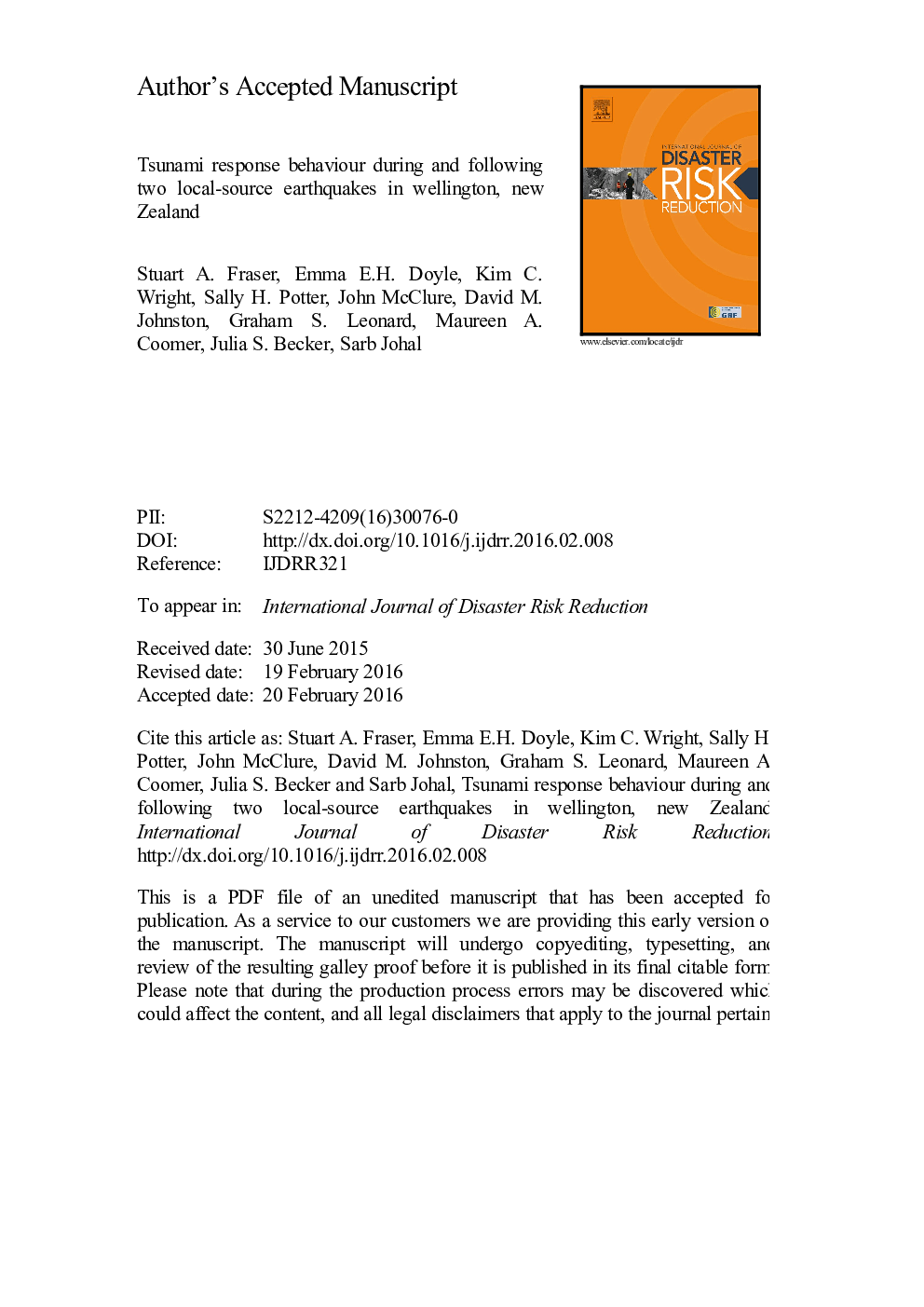| Article ID | Journal | Published Year | Pages | File Type |
|---|---|---|---|---|
| 7472720 | International Journal of Disaster Risk Reduction | 2016 | 29 Pages |
Abstract
In July and August 2013, two moment magnitude 6.6 earthquakes occurred less than 80Â km from the city of Wellington, New Zealand. The earthquakes were widely felt and injured over 100 people. Following the earthquakes, a survey was conducted in coastal suburbs of Wellington, one of which (Island Bay) had previously received sustained tsunami education and participated in community-based evacuation mapping. Both earthquakes were of insufficient strength and duration to meet the thresholds to prompt evacuation from coastal areas, as communicated in civil defence and emergency management messaging. As expected, the vast majority of residents did not evacuate, however, the surveys suggest that this was unrelated to the ground shaking intensity and duration, which were commonly over-estimated. Previous education is shown to have little influence on perception of potential tsunami impact, but responses showed accurate perception of safety in relation to the tsunami hazard zone. This study highlights the continuing need to actively engage with at-risk communities, both in terms of education and training around appropriate responses to natural or official tsunami warnings, and their active participation in the defining, designing and implementation of risk management practice at a community level.
Related Topics
Physical Sciences and Engineering
Earth and Planetary Sciences
Geophysics
Authors
Stuart A. Fraser, Emma E.H. Doyle, Kim C. Wright, Sally H. Potter, John McClure, David M. Johnston, Graham S. Leonard, Maureen A. Coomer, Julia S. Becker, Sarb Johal,
